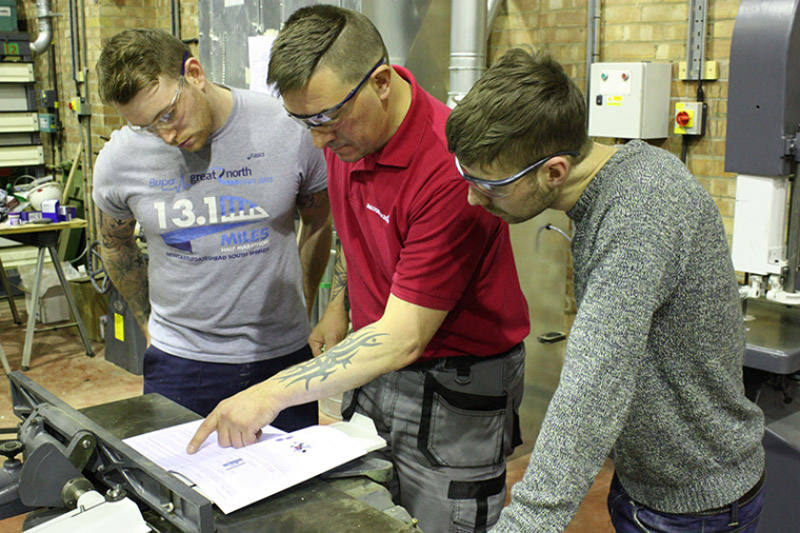
Alex Dalton, Managing Director of Daltons Wadkin, shares his thoughts and looks at the importance of working safely with wood. And explores what merchants specialising in timber and wood products should be doing to make sure they are working safely and comply with the Government standard.
Did you know that in 2016 1.3 million working people suffered from a work-related illness? A phenomenal statistic that should be taken very seriously. More so in an industry such as woodworking – the only industry where machinery accidents cause more injuries than slips and trips. Around 25% of these are classed as major injuries. Accidents can be caused by either contact with the moving parts, including tools, or kickbacks of timber and ejected cutters. This happens because of inadequate guarding and poor systems of work, often resulting from insufficient training.
Did you also know that all operators or anyone who assists in operating woodworking machinery must be trained by law? There are hefty fines for companies found lacking.
So, what can merchants do training and supervision-wise to make sure they’re not fined, and more importantly, don’t have any workplace injuries?
Seeing as poor supervision and inadequate training are two of the main causes of accidents. The law requires that all workers must receive adequate training, including refresher training. It also makes good business sense to make sure your employees are working efficiently and safely.
Make sure you’re training your staff. This can actually be done in-house, but only as long as you have competent staff to provide it. It can also be external or a combination of both. It must cover the type of machine and work the employee will be expected to use.
Who should be trained?
All machine operators: All people who assist in the machining process, such as taking off, feeding and loading the workpieces. All people who set, clean and maintain the machines.
As the training and supervision needs for each operator will vary, you will need to assess specific needs carefully and make sure that training is appropriate for their age and experience.
When should training be given?
It goes without saying that new starters and less experienced staff are likely to have the greatest training needs. You also need to think about refresher training for trained, qualified and experienced operators at least every three to five years, sooner if a risk assessment identifies a particular training need. Operators can lose some skills if they don’t use them regularly.
 Why refresher training?
Why refresher training?
I am a firm believer that businesses shouldn’t wait for an incident to prompt refresher training. According to the Government’s Health and Safety Executive, an estimated 621, 000 UK workers suffered from a serious injury in the last year alone.
Though the causes of these incidents are unknown, this figure alone should be enough motivation to consider some intensive safety, workplace and refresher training for your staff members. Especially in industries such as woodworking that has one of the highest accident rates in manufacturing.
Don’t wait for an injury in your workplace before scheduling training, prevent it!
Who needs refresher training?
Refresher training is important:
- for operators who ’stand-in‘ occasionally for the regular operator – at least every three years.
- for someone coming back to a machine they have not used for a while.
- when the system of work changes.
- when new controls have been fitted.
- when new machines or equipment have been brought in.
- after an incident or near miss to show how the incident can be avoided in future.
- after any change in legislation or new guidance.
- for all staff every three to five years.
Don’t forget to keep up with new technology and advancements in the industry.
For a company such as Daltons Wadkin, which deals in industrial woodworking machinery, new advances in technology are being introduced to us every day. Using specialised courses of refresher training, you can help to remind your staff members of the safest procedures to use when handling such machinery – whether it’s a piece of kit they’ve used for years, or a new development they’re still getting to grips with.
Not only will this help to encourage safer engagement with these technologies, it also helps to promote your business as one that is fully prepared to take on new advancements and technological changes to your industry.
In this post, we’re not even touching upon health and safety equipment, which is a whole issue in itself! But I will say that workers have a right to a safe workplace. The law requires employers to provide their employees with safe workplaces.
Final point!
Don’t forget to keep records. Once the employee has received the required training, and demonstrated they are competent using the machine, I would recommend authorising in writing the machines and operations that they can use.









